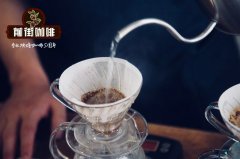What is the coffee wet planing method? wet peeling and washing process of coffee beans

Professional coffee knowledge exchange more coffee bean information please follow the coffee workshop (Wechat official account cafe_style)
The drying process seems simple: pick the fruit and put it in the sun until it changes from red to brown to close to black, then peel off the thick, dry outer layer and reveal the mung beans in one step. This is a method suitable for arid areas, where sunlight and heat can dry the seeds in the whole pericarp.
It is often called "natural coffee" because of its simplicity, because the fruit remains intact and undisturbed, a bit like drying grapes into raisins. Since it requires very little investment, drying is the default method of producing cheap commodity-grade coffee, which can dry fruit and seeds in areas with suitable climatic conditions.
But it is a failure in wet or humid areas. If the drying speed is not fast enough, the fruit will degenerate, rot or mildew.
The dry processing of coffee can also be very inconsistent. If you want a cup of clean, sweet, full-bodied coffee, dry coffee requires more manual labor than wet coffee. Even the most careful pickers pick immature or half-ripe green coffee from the branches when picking red ripe cherries. If it is not removed during the first day of drying, the green will turn brown, making it difficult to distinguish it from ripe fruit.
Interestingly, in some dry areas, coffee begins to dry on trees. Especially in some parts of Brazil, the rainy and dry seasons are obvious. When the coffee is dry, when the coffee is harvested, it is hot enough to burn the coffee fruit, while it is still on the branches. These are called "pasas", raisins in Latin America, and they have a leathery fruit texture. Cherries forgotten in the tree also dry, sometimes turning into seeds as hard as rock. These are often called "pods" and are considered a defect when they appear in sorted, shelled, ready-to-export coffee.
END
Important Notice :
前街咖啡 FrontStreet Coffee has moved to new addredd:
FrontStreet Coffee Address: 315,Donghua East Road,GuangZhou
Tel:020 38364473
- Prev

Correct drinking method of Sudan Rume Coffee description of Sudan Rume Coffee Flavor
Professional coffee knowledge exchange more coffee bean information Please follow the coffee workshop (Wechat official account cafe_style) when I tasted Sudan Rume for the first time, I was surprised that I had tasted so much cardamom in the cup, it was so sweet. I have never experienced this taste, it is a manual addition to coffee. Sudan is the controversial origin of coffee, and this feat does inspire.
- Next

What is Ironhide Coffee? does it belong to Arabica?
Professional coffee knowledge exchange more coffee bean information Please follow Coffee Workshop (Wechat official account cafe_style) Iron pickup Coffee is a subvariety of Arabica family coffee and a more specific classification of high quality coffee beans. They are quite high for coffee trees and produce less coffee than other varieties, which means yields tend to be lower and more difficult. that
Related
- Beginners will see the "Coffee pull flower" guide!
- What is the difference between ice blog purified milk and ordinary milk coffee?
- Why is the Philippines the largest producer of crops in Liberia?
- For coffee extraction, should the fine powder be retained?
- How does extracted espresso fill pressed powder? How much strength does it take to press the powder?
- How to make jasmine cold extract coffee? Is the jasmine + latte good?
- Will this little toy really make the coffee taste better? How does Lily Drip affect coffee extraction?
- Will the action of slapping the filter cup also affect coffee extraction?
- What's the difference between powder-to-water ratio and powder-to-liquid ratio?
- What is the Ethiopian local species? What does it have to do with Heirloom native species?

